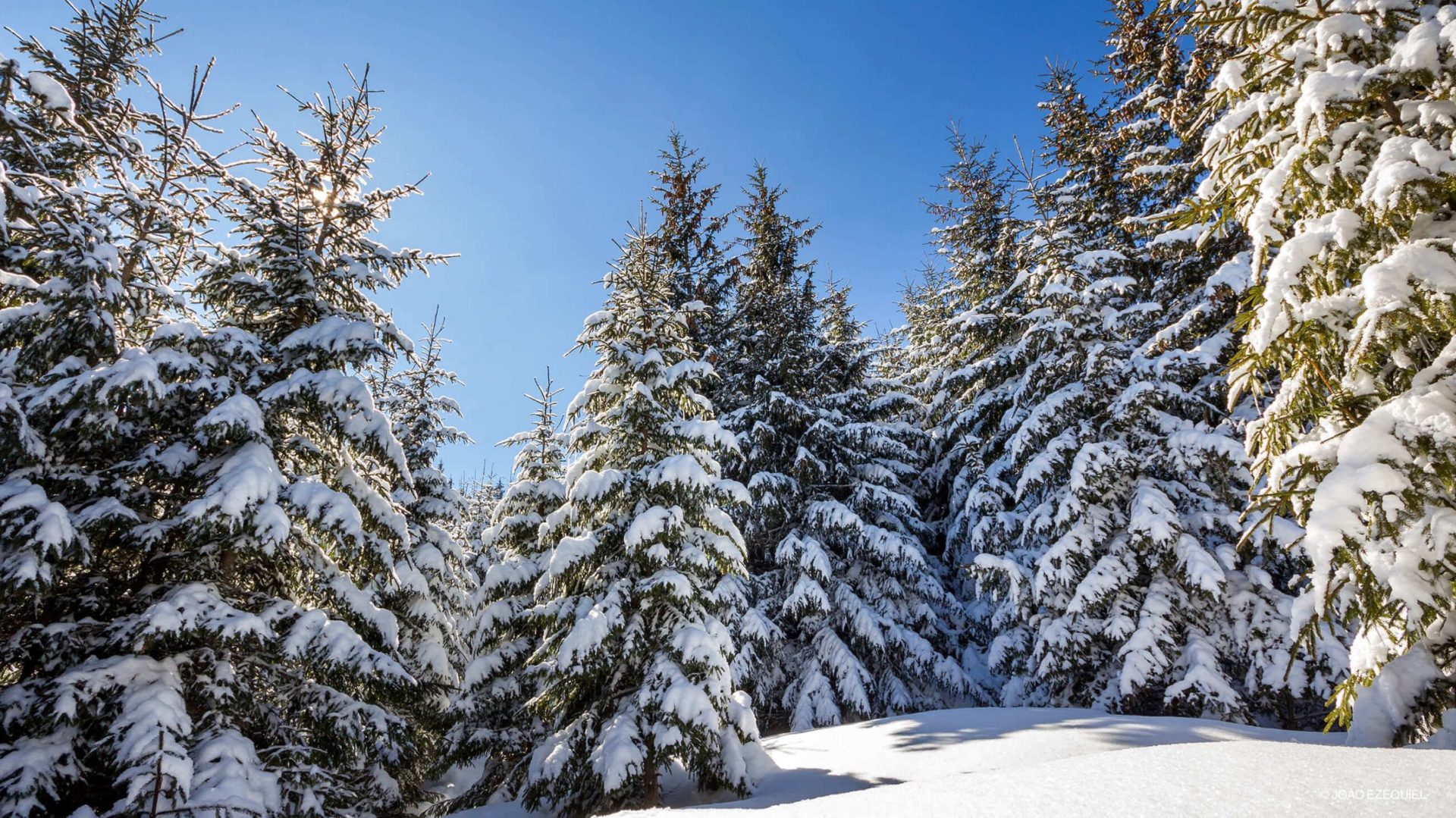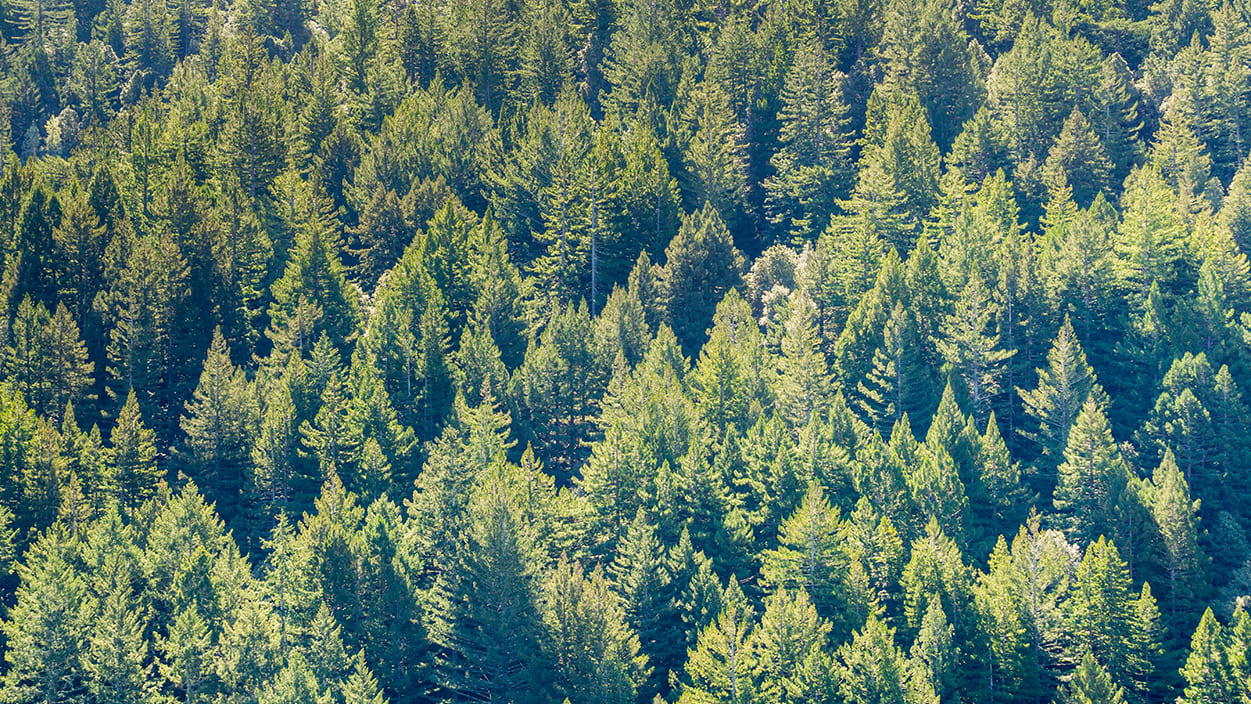With its tall and elegant conical crown, the Douglas fir (Pseudotsuga menziesii) is one of the most sought after species as a Christmas tree. Also known as the Oregon pine or pseudotsuga, it is native to the west coast of North America, where it is one of the most sought after species for decoration during Christmas festivities.
All trees dig their roots into the earth and extend their branches towards the sky in order to guarantee their place in the sun. In this unbridled race to the light, the towering Douglas fir is undoubtedly one of the winners. In its native region, it can reach 100 metres in height. It is one of the tallest species in the world, and can live for up to 1,000 years.
In Portugal, however, it is normally half that height, i.e. approximately as tall as a 17-storey building. The species is said to have arrived in Portugal in 1840, and was valued for both its ornamental beauty and its wood. Although it is not a common tree in Portugal, it can be found in parks, gardens and small plantations in various mountain ranges in the north and centre of the country.
The Douglas fir can be distinguished above all by its evergreen foliage, its straight trunk and its conical, broad crown when it is in its juvenile stage. These attributes have made it one of the most popular species for Christmas trees, especially in the United States. In Portugal, however, it is not a common choice, as it is quite scarcely and dispersedly distributed. Christmas tradition amongst the Portuguese has mainly favoured the maritime pine (Pinus pinaster), a species from the same family as the Douglas fir – Pinaceae, which is much more widespread in Portugal.
As with the other members of the Pinaceae family, the Douglas fir does not have flowers, but male and female reproductive structures (so-called strobiles or cones, from which the term conifer, which covers many species of gymnosperms or conifers, is derived). We call them pine cones and they appear between March and May, and they store pollen and seeds. Males are about 2 centimetres long and yellow-orange in colour and females reach up to 10 centimetres in length, and are also more visible because of their colours: yellowish-green when young and reddish-brown when mature. Pine cones can easily be distinguished by their unmistakable protective scales, which are protruding, long and trifurcated at the tip.
In young specimens of Douglas fir, the protective bark (rhytidome) is greyish in colour and covered with resinous vesicles; while in older specimens, it becomes woody and cracked and has a reddish-brown tinge. The branches also change colour with age: initially they are yellowish green, then yellowish brown, and finally grey and covered in short, fine, soft hairs.
The green, needle-shaped leaves, which measure up to 3.5 centimetres in length, are arranged in a spiral and have two white stripes on the underside. When squeezed, they release an aromatic odour.




